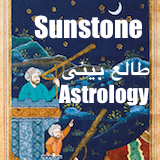Financial Times:
Andrew England in London and Najmeh Bozorgmehr in Tehran
Seven years ago, Donald Trump strode purposely into the Diplomatic Reception Room of the White House and delivered a short address that sounded the death knell of what much of the rest of the world considered a landmark success of global diplomacy.
The US president began by declaring that he wanted to give an update on “our efforts to prevent Iran from acquiring a nuclear weapon”. He ended by signing a memorandum that reimposed damaging sanctions on the Islamic republic, the start of his so-called “maximum pressure” campaign.
In 12 minutes, Trump had torn up Barack Obama’s signature foreign policy achievement: a 2015 accord with Tehran that strictly limited Iran’s nuclear activities and had the buy-in of Europe, Russia and China.
“If we do nothing, we know exactly what will happen in just a short period of time,” Trump said. “The world’s leading state sponsor of terror will be on the cusp of acquiring the world’s most dangerous weapons.”
Now back in the White House, Trump is confronting the repercussions of his 2018 decision — Iran went from complying with the deal to aggressively ramping up its nuclear activity and is now locked in a collision course with the west that is set to come to a head this year.
At stake is the risk of a new war erupting in the Middle East, and, if Iran believes it faces an existential threat, the possibility of it weaponising its expanding stockpile of highly enriched uranium to become the globe’s 10th nuclear armed power.
“There’s space for diplomacy. But both sides have to have the political will and the urgency to meet the moment,” says Kelsey Davenport, director for non-proliferation policy at the Arms Control Association. “Absent that, the escalatory kind of tit-for-tat will spiral out of control this year.”
Go to link










Comments